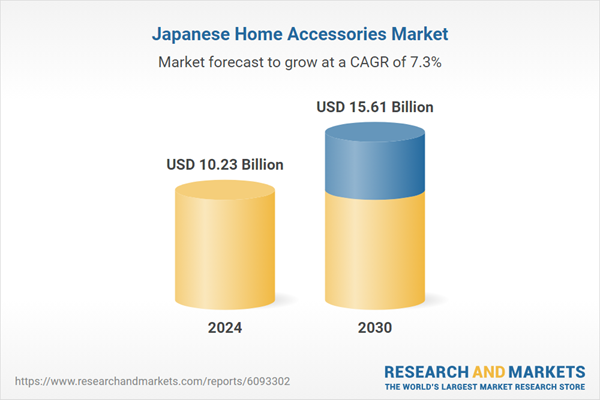Speak directly to the analyst to clarify any post sales queries you may have.
10% Free customizationThis report comes with 10% free customization, enabling you to add data that meets your specific business needs.
Demographic shifts, including an aging population and rising single-person households, are prompting demand for ergonomic and space-efficient solutions. E-commerce expansion and the integration of smart technologies - such as modular decor and smart lighting - are broadening product accessibility and appeal. Sustainability is becoming a core focus, with consumers favoring locally sourced, eco-friendly materials. These factors are collectively fostering innovation and quality, making Japan’s home accessories market a dynamic and growing segment within the home décor and furnishings industry.
Key Market Drivers
Rising Homeownership Across the Region
The increase in homeownership, particularly in Japan’s rural regions, is playing a crucial role in driving the home accessories market. As of 2023, Japan’s homeownership rate stood at 60.9%, supported by initiatives like “akiya banks,” which offer vacant homes at low costs to encourage renovation and settlement. These trends are spurring demand for home accessories that blend traditional Japanese aesthetics with modern functionality. Consumers, particularly younger homeowners relocating to rural areas, are seeking personalized solutions for home renovation projects. Popular items include modular furniture, smart home accessories, and décor that reflects both contemporary taste and cultural heritage. This growth in homeownership not only stimulates demand for furnishings but also aligns with lifestyle changes that prioritize comfort, efficiency, and sustainability, thereby expanding the scope and appeal of the home accessories market.Key Market Challenges
High Competition and Price Sensitivity
The Japan home accessories market is characterized by intense competition and heightened price sensitivity. Both domestic and international brands vie for consumer attention, creating a crowded and competitive landscape. As a result, companies face challenges in differentiating their products and building long-term customer loyalty. The prevalence of similar offerings often triggers price-based competition, which compresses profit margins and limits pricing flexibility. Japanese consumers are especially discerning and value-conscious, carefully evaluating quality and price before purchasing. This environment requires brands to maintain a delicate balance between affordability, design innovation, and quality assurance. Companies must also streamline production and supply chains to remain competitive, while staying responsive to shifting consumer expectations in a highly saturated and fast-paced market.Key Market Trends
Rising Demand for Eco-Friendly Products
The growing emphasis on sustainability is significantly impacting Japan’s home accessories market. Consumers are increasingly choosing products crafted from environmentally friendly materials like bamboo, recycled metals, organic fabrics, and reclaimed wood. This shift aligns with longstanding cultural values that appreciate natural simplicity and imperfection, such as wabi-sabi. Manufacturers are responding with offerings that reflect these preferences, including biodegradable décor items, modular furniture, and energy-efficient lighting. The Japandi trend, which merges Japanese minimalism with Scandinavian functionality, is also contributing to the popularity of eco-conscious design. These sustainability trends are not only influencing consumer behavior but also driving ethical innovation across the supply chain, positioning eco-friendly products as a key pillar of market growth.Key Market Players
- Nitori Co., Ltd
- Ryohin Keikaku Co., Ltd
- Francfranc Corporation
- IKEA Japan K.K.
- Miles Kimball
- Herman Miller, Inc.
- home24
- Dekorcompany
- Pepperfry Limited
- D'décor
Report Scope:
In this report, the Japan Home Accessories Market has been segmented into the following categories, in addition to the industry trends which have also been detailed below:Japan Home Accessories Market, By Product Type:
- Mirrors
- Candles
- Lighting
- Vases & Bowls
- Others
Japan Home Accessories Market, By Price Range:
- Economy/Mass
- Premium/Luxury
Japan Home Accessories Market, By Distribution Channel:
- Supermarket & Hypermarket
- Gift Shops
- Dedicated Pet Stores
- Online
- Others
Japan Home Accessories Market, By Region:
- Hokkaido & Tohoku
- Chubu
- Chugoku
- Kyushu
- Rest of Japan
Competitive Landscape
Company Profiles: Detailed analysis of the major companies present in the Japan Home Accessories Market.Available Customizations:
With the given market data, the publisher offers customizations according to a company's specific needs. The following customization options are available for the report.Company Information
- Detailed analysis and profiling of additional market players (up to five).
This product will be delivered within 1-3 business days.
Table of Contents
Companies Mentioned
- Nitori Co., Ltd
- Ryohin Keikaku Co., Ltd
- Francfranc Corporation
- IKEA Japan K.K.
- Miles Kimball
- Herman Miller, Inc.
- home24
- Dekorcompany
- Pepperfry Limited
- D'décor
Table Information
| Report Attribute | Details |
|---|---|
| No. of Pages | 82 |
| Published | June 2025 |
| Forecast Period | 2024 - 2030 |
| Estimated Market Value ( USD | $ 10.23 Billion |
| Forecasted Market Value ( USD | $ 15.61 Billion |
| Compound Annual Growth Rate | 7.3% |
| Regions Covered | Japan |
| No. of Companies Mentioned | 10 |









